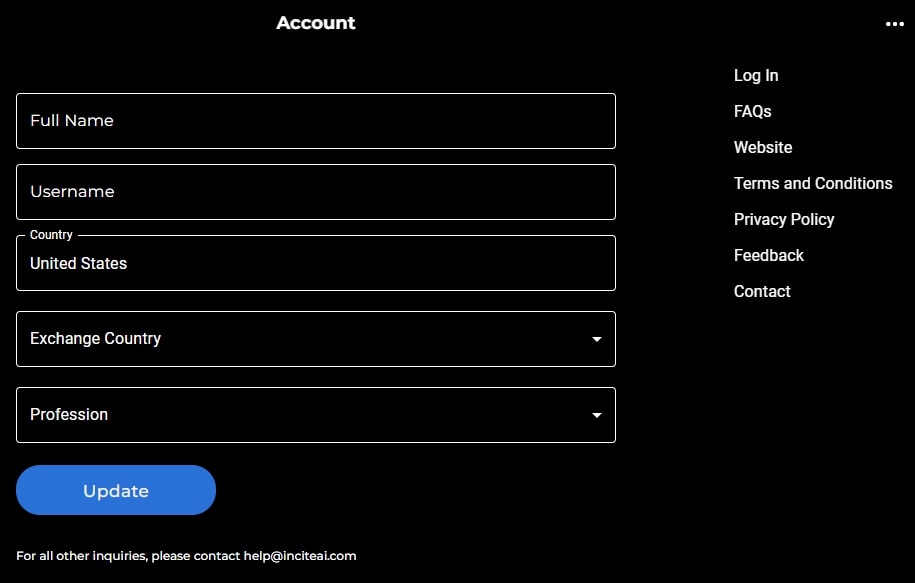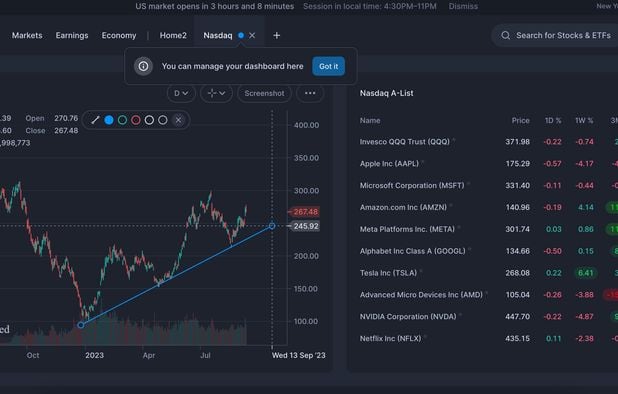Support for customers is essential when choosing an AI trading platform that can predict or analyze stocks. The availability of a reliable and responsive customer support service can have a huge impact in solving any issues, maximising the usage of the platform and making sure that trading runs smooth. Here are 10 top tips to assess the customer support provided by these platforms.
1. Review Support Accessibility
24/7 support: Check if your platform offers support around-the clock, which is important for trading in real-time and global markets.
Hours of operation: If 24/7 support isn't offered, make sure support is available during your working hours.
Make sure there is support available on weekends, holidays or when markets are closed.
2. Test Response Times
Initial response. Contact customer support and ask a sample question to determine how quickly they will respond.
Take into consideration the amount of time it takes for you to resolve problems, and not just acknowledge them.
Live chat: Test the responsiveness and effectiveness of live chat if it's accessible.
3. Assess the Support Channels
Multiple channels: Check that the platform is compatible with multiple channels, such as live chat, email, telephone or social media.
Check your preferred channel to determine if it's trustworthy and accessible.
Self-service options: Search for a complete knowledge base, FAQs, or forums on community for fast problem-solving.
4. Evaluate Support Quality
Support agents should be educated regarding trading platforms, technical concerns and platform.
Problem-solving: Evaluate whether the support agent can solve complicated issues effectively, or escalate them appropriately.
Professionalism. Check that support interactions were professional, courteous, helpful.
5. Find Account Managers who are Dedicated
Premium support: Make sure to determine if customers of higher-tier plans, or those who are institutional users have access a dedicated account manager.
Individualized assistance: Check if account managers provide tailored support and proactive guidance.
Building relationships: Make sure that Account managers are able to be reached and establish long-term relationships with users.
6. Review Support Documentation
Knowledge base. Check that the platform contains a well-organized database of tutorials, guides, and suggestions for troubleshooting.
Check the platform's video tutorials and webinars to determine whether they're available to visual learners.
API documentation. API documents are important to developers.
7. Examining the support of peers and communities
User forums: Check if the platform has an active user community or forum in which users can offer suggestions and solutions.
Social media groups: Find unofficial groups on social media (e.g. Reddit. Facebook. LinkedIn) that discuss the platform.
Community engagement: Determine whether members of the team actively participate in forums or discussions within the community.
8. Evaluate Escalation Processes
Issue escalation. Make sure that you have a clearly defined procedure for reporting unresolved matters to management or higher-level staff.
Follow-up: Make sure that support has followed up on a concern after the issue has been solved to ensure that the issue was completely completed.
Feedback loop - Determine if the platform gathers feedback from customers in order to improve customer service.
9. Test Support for critical situations
Market volatility: Contact support during periods of high-volatility and assess their responsiveness.
Simulate a tech problem (e.g. the issue of login or data that is unclear) to see the way tech support responds.
Trade execution: Find out whether the support team is able to assist with urgent issues in trade (e.g., delayed execution, unsuccessful orders).
Take User Feedback into Account
Online reviews: Read user reviews on platforms like copyright, G2, and Reddit in order to determine the overall level of satisfaction.
There are testimonials available about positive experiences by searching for case studies or testimonials.
Visit the platform to find out how they handle complaints or negative feedback, as well as support.
Bonus Tips
Support for the trial period: To check the reliability of the platform, you are able to test the support of the platform during the trial period, which is free.
Language support: If you're not a native English speaker, check whether support is available in your language of choice.
Training and onboarding - Check whether your platform provides classes or onboarding to help users get started.
Follow these tips to assess the customer support provided by AI stock trading platforms. Pick a platform that provides prompt, efficient and quick support. Strong customer support will enhance your experience, and you can make the most of all options. Follow the best discover more here about ai for trading for blog tips including best ai trading app, AI stock trading app, best ai trading app, ai chart analysis, options ai, options ai, using ai to trade stocks, best ai for trading, market ai, ai investing app and more.

Top 10 Tips For Assessing The Risk Management Of AI stock Analysing Trading Platforms
Risk management is an essential element of any AI trading platform that predicts or analyzes stocks that helps safeguard your investment and limit potential losses. Platforms with robust risk management features can assist you in navigating volatile stock markets and make informed decision. Here are 10 top suggestions to help you analyze the risk management capabilities of these platforms.
1. Study Stop-Loss Features and Take Profit Features
Flexible settings: Make sure you have the ability to set the take-profit or stop-loss level for specific trades.
Check if you can use trailing stops. They automatically adjust as market conditions shift in your favor.
Stop-loss guarantees: Check to see if the platform provides stop-loss guarantees, which will guarantee that your account will be closed at a specified price in even volatile markets.
2. Assessment Position Sizing Instruments
Fixed amount: Ensure the platform lets you define position sizes based on the fixed amount of money.
Percentage of portfolio: Determine if you can set size limits in percentages of your portfolio total to manage risk proportionally.
Risk-reward Ratio: Verify that the platform permits setting individual risk-reward levels.
3. Make sure you have Diversification Support
Multi-assets trade: Ensure that the platform can support trading across a variety of asset classes (e.g. ETFs, stocks options, forex, etc.) to diversify your portfolio.
Sector allocation: See if the platform provides tools to monitor and manage exposure to sectors.
Diversification of geographical risk: Find out if the trading platform supports international markets in order to spread geographical risk.
4. Review margin and leverage controls
Margin requirements. Be sure to know the margin requirements before trading.
Examine whether you are able to set limit on leverage to limit your risk exposure.
Margin call: Check that the platform is providing timely notifications for margin calls. This can help to prevent account closure.
5. Review the Risk Analytics Reporting
Risk metrics. Be sure that the platform has key risk indicators (e.g. VaR, Sharpe Ratio, Drawdown) relevant to the portfolio you are managing.
Evaluation of scenarios: Ensure that the platform you're using permits you to create market scenarios and analyze the risks.
Performance reports: Verify if the platform provides complete performance reports, including the risk-adjusted return.
6. Check for Real-Time Risk Monitoring
Portfolio monitoring: Ensure your platform provides live monitoring of the risk exposure to your portfolio.
Alerts and notifications. Ensure that the platform has sent out alerts in real-time when certain risk-related events happen (e.g. Margin breaches, triggers for stop-loss orders).
Risk dashboards: Check if the platform offers customizable risk dashboards for an in-depth view of your risk profile.
7. Evaluate Stress Testing and Backtesting
Test for stress: Ensure whether the platform allows you to stress test your portfolios or strategies during extreme market conditions.
Backtesting Check if platform supports backtesting with historical data to assess the risk and performance.
Monte Carlo Simulators: Verify whether the software uses Monte Carlo models to model potential outcomes and determine the risk.
8. Evaluation of Compliance with Risk Management Regulations
Compliance with the regulatory requirements: Ensure your platform is in compliance with the applicable risk management regulations in Europe as well as the U.S. (e.g. MiFID II).
Best execution : Check to find out if your platform uses best execution procedures. This will ensure that trades are executed at the highest possible price, minimizing the chance of the chance of slippage.
Transparency: Make sure that the platform offers clear and transparent disclosures of the risks.
9. Check for user-controlled risk parameters
Custom risk rule: Make sure that your platform permits you to set up your own risk management rules (e.g. the maximum daily loss, or maximum size of the position).
Automated risk controls: Verify that the platform is able to automatically enforce rules for risk management according to your pre-defined criteria.
Manual overrides: Check whether your platform permits you to manually bypass automated risk controls.
Study Case Studies, User Feedback, and Case Studies
User reviews: Review feedback from users to assess the effectiveness of the platform in risk management.
Case studies: Check for case studies or testimonials that showcase the platform's strengths in the field of risk management.
Forums for community members Find out if there's an active group of traders that share advice and strategies for risk management.
Bonus Tips
Trial period: Try an unpaid trial or demo to try out the platform's risk management features in real-world situations.
Support for customers: Make sure whether the platform offers robust support in relation to questions or concerns relating to the management of risk.
Educational resources - Find out whether the platform offers educational resources and tutorials about best practices in risk management.
These guidelines will allow you to assess the risk management abilities of AI stock-Predicting/Analyzing trading platforms. So you can select a platform that protects your capital and limits potential losses. To stay out of unstable markets and to achieve long-term success in trading, you need robust software for managing risk. Check out the top ai for trading stocks info for blog info including investing with ai, best AI stocks, ai tools for trading, best AI stocks to buy now, best AI stocks to buy now, how to use ai for copyright trading, best ai for stock trading, best stock prediction website, AI stock prediction, chart ai trading and more.
